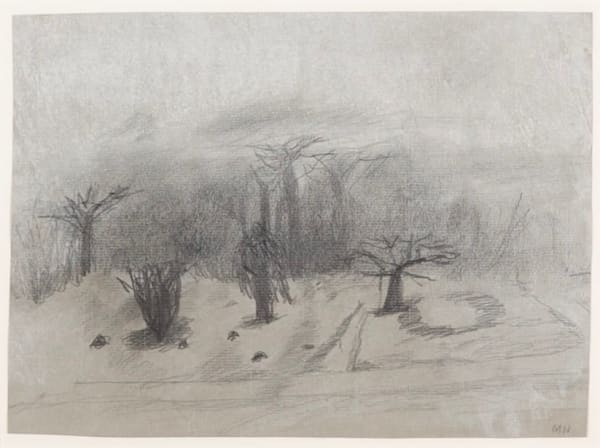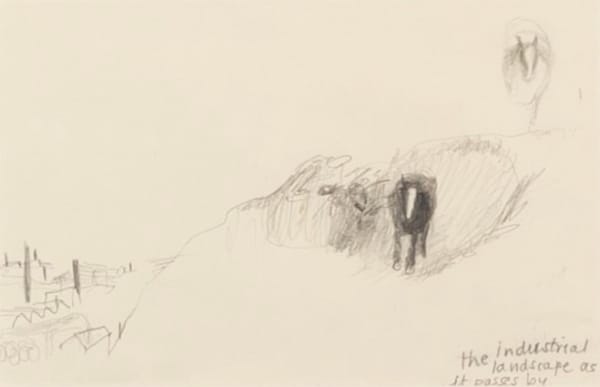Mary Newcomb Paintings for Sale1922-2008
Visionary painter Mary Newcomb displayed an affinity with English folk art and a grasp of natural science that was anything but naïve. Although falling into the tradition of Blake, Turner and Palmer - and latterly of Winifred Nicholson, Mary Potter and Elisabeth Vellacott - in making poetry from the rural picture, she was an untrained and entirely intuitive artist who always claimed she could not draw properly. Late in life she thought she had finally understood the meaning of the word "tone".
Mary Newcomb was born in Harrow-on-the-Hill in 1922. In 1943 she graduated from Reading University with a BSc in Natural Sciences, and a Diploma of Education the next year. Between 1944 and 1950 she taught science and mathematics at the high school in Bath.
In 1950, Newcomb married and moved to Norfolk. She also spent considerable periods of time living in Suffolk. Newcomb's rural surroundings are the subject of most of her works, although she does not paint in a naturalistic manner. The simplicity of Newcomb's style gives her art an immediacy, which should not be confused with naïvety.
She became a stalwart of the Norwich Twenty Group, before daring to take a bag of work to London dealer Andras Kalman, the Hungarian refugee who had championed LS Lowry in his first gallery in Manchester. On that occasion the Knightsbridge premises were thronged with people, so Mary went home again. But her second attempt resulted in an instant meeting of minds and the start of a model relationship between artist and dealer.
With a dozen solo exhibitions at Crane Kalman from 1970, and further shows across Europe and in America, the Newcomb name was firmly on the map. There were purchases by numerous public galleries including the Tate and in 1996, a splendid monograph by Christopher Andreae, recently republished. Her art lay in the rhythms of nature and the rituals of rural life - in her chickens, guinea fowl and, best of all, sheep, in village fetes and country shows, or in incidents glimpsed as she travelled on the bus, or walked or bicycled.
In 1997 the Tate Galley purchased a large work entitled 'People walking amongst small sandhills'. A monograph on Newcomb was published by Lund Humphries in 2018.
Newcomb’s work can be found in many public collections, including the Tate Gallery; The Ingram Collection of Modern British and Contemporary Art, London; Norfolk Museums, Norwich; Sainsbury Centre for Visual Arts, Norwich; Lakeside Arts, University of Nottingham; Northampton Museums and Art Gallery; Ipswich Art Gallery, Colchester and Ipswich Museums, Suffolk; Pembroke College Oxford, JCR Art Collection and Pier Arts Centre, Stromness, Scotland. Her paintings have been collected over the years by Ben and Winifred Nicholson, Paul Newman, Queen Beatrice of Holland, John Osborne, Julie Andrews, Jacqueline Bisset, Joan Rivers, Anouk Aimee and Richard Attenborough.






